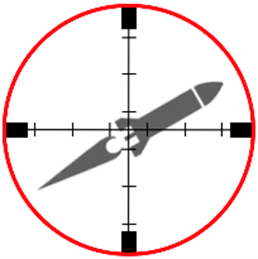
The Fast Line-of-sight Imagery for Targets and Exhaust-plume Signatures (FLITES) software provides high fidelity scene generation capabilities for a multitude of applications, e.g., sensor algorithm development or Hardware-in-the-loop (HWIL) analysis and testing. FLITES simulates the physical world in the IR, UV, and Visual spectrum by calculating signature phenomenological effects (self-emission, sky-shine, earthshine, solar illumination, etc.) and creating time-sequenced radiance images from the sensor’s perspective. All signature processing algorithms are performed using Graphics Processing Units (GPUs).
FLITES generates radiance images for data analysis, closed-loop digital simulations, real-time HWIL testing, and visualization studies. Images can be saved to a hard drive for playback or projected/injected to test a sensor. All of this is potentially done in “real-time,” which refers to the speed FLITES can achieve relative to the fidelity of the phenomena contained in the scenario. Simple polygon scenes can reach over 10,000 fps while more complex scenes can be limited to 10-30 fps.
As previously mentioned, FLITES works by leveraging the computational capability of a GPU through both OpenGL and the Compute Unified Device Architecture (CUDA) NVIDIA libraries. Due to the CUDA capability, an NVIDIA GPU is required to fully realize FLITES capabilities. There are future-plans to enable FLITES to work not only on non-NVIDIA GPUs but on CPUs as well.
FLITES is designed to provide large levels of flexibility for the end-user while allowing a diverse set of use-cases to be modeled. As such, FLITES is primarily designed as an Application Programming Interface (API) that can easily be integrated into large scale simulations or connected to separate specialized software to perform tasks like physics-based motion controls. FLITES is designed with a plugin architecture so that the end-user can develop plugins to solve custom problems or implement unique features. These plugins can also be used to integrate other software packages into FLITES.

